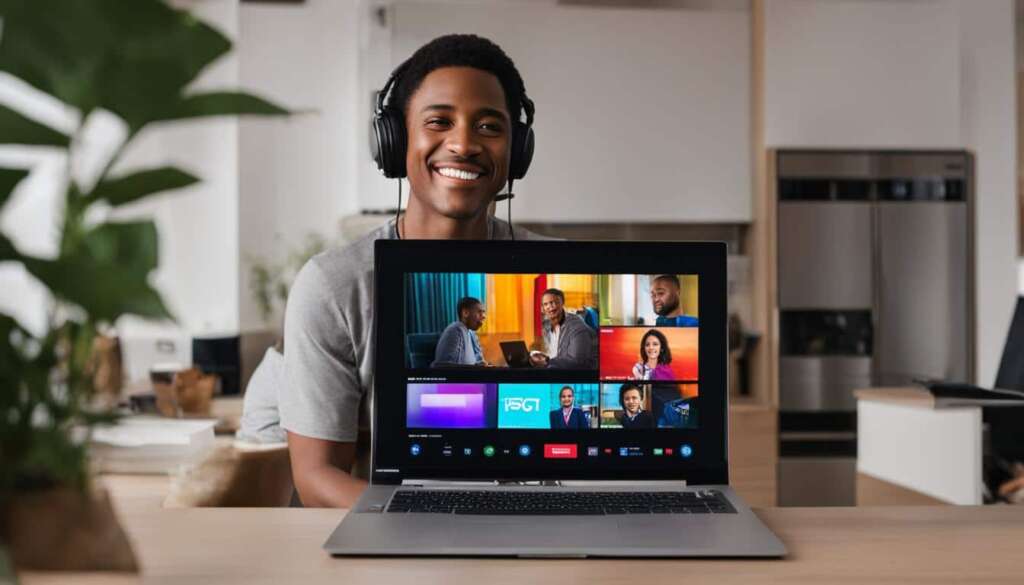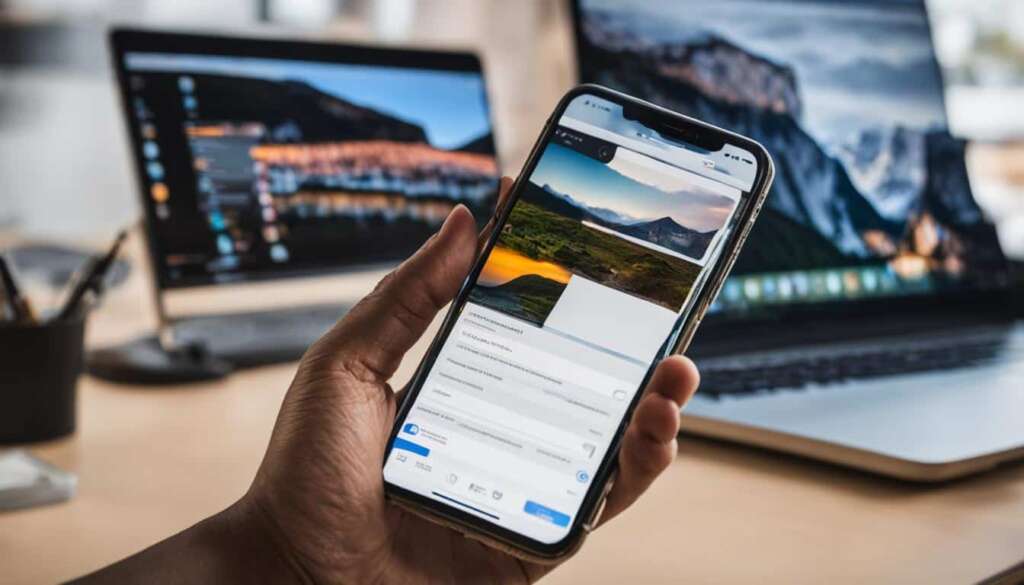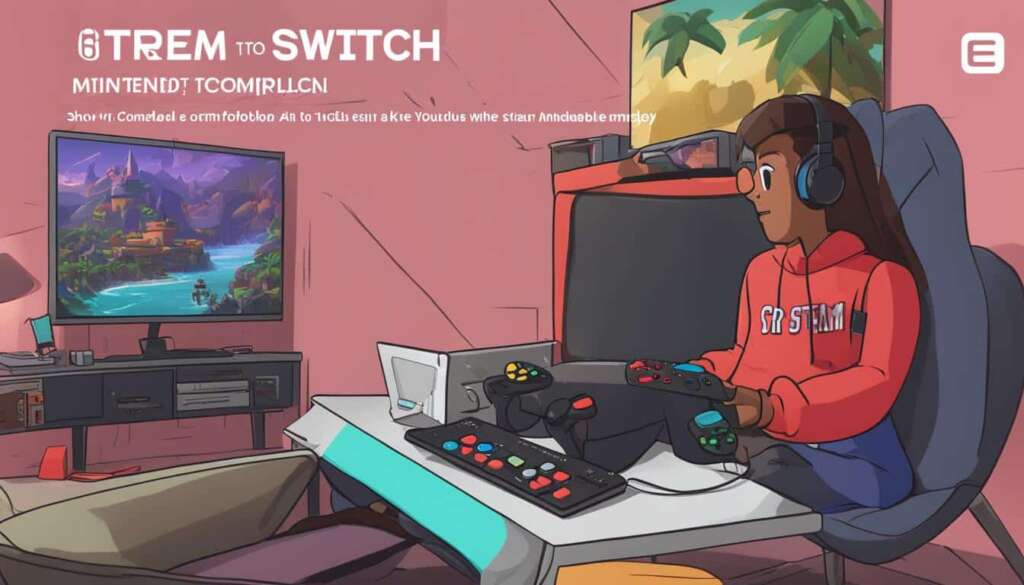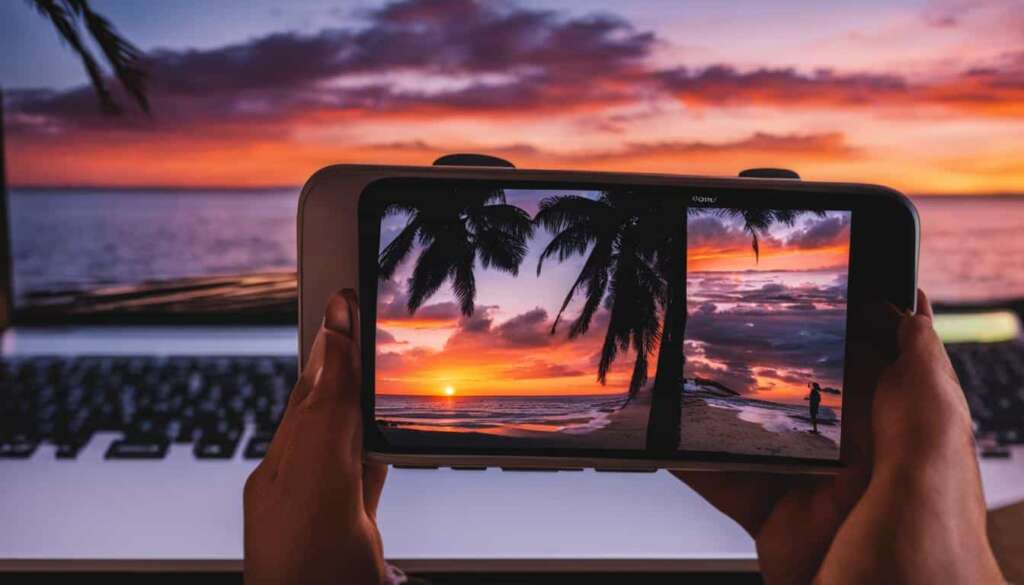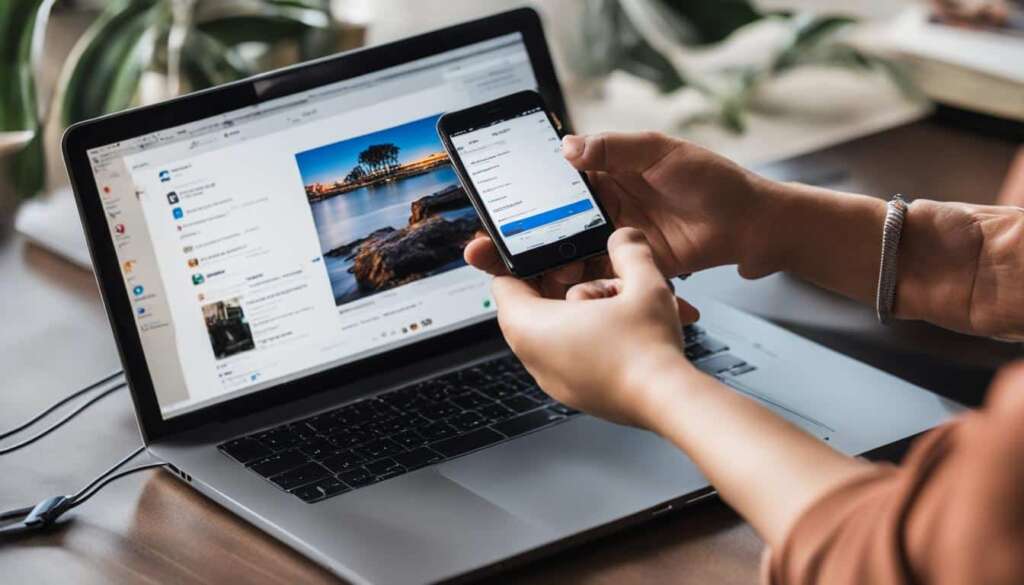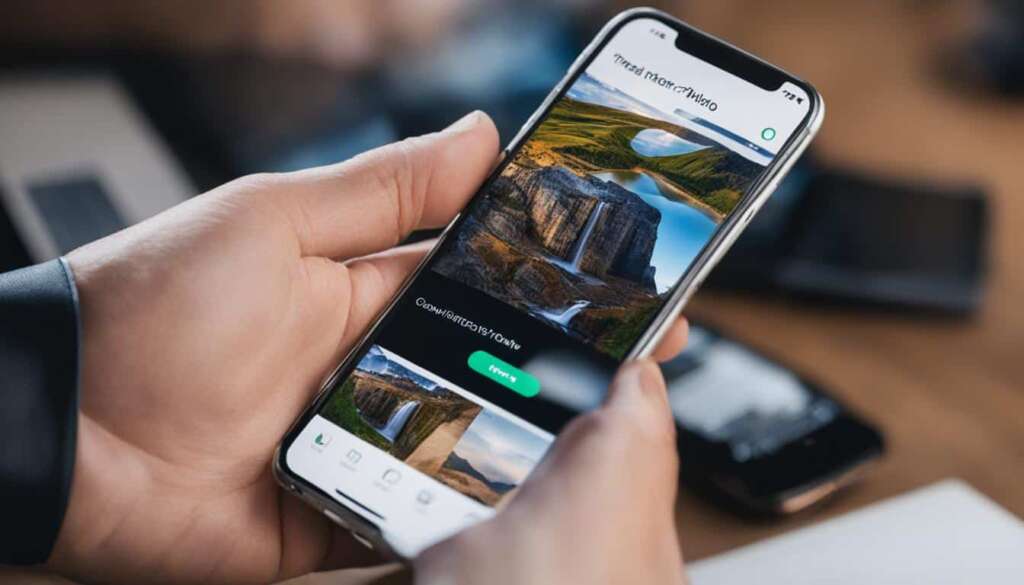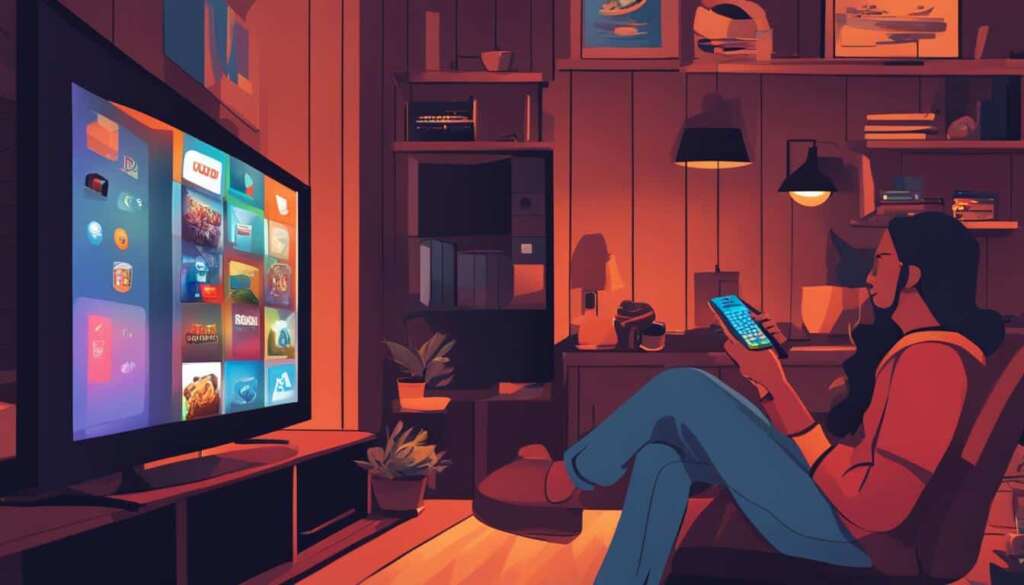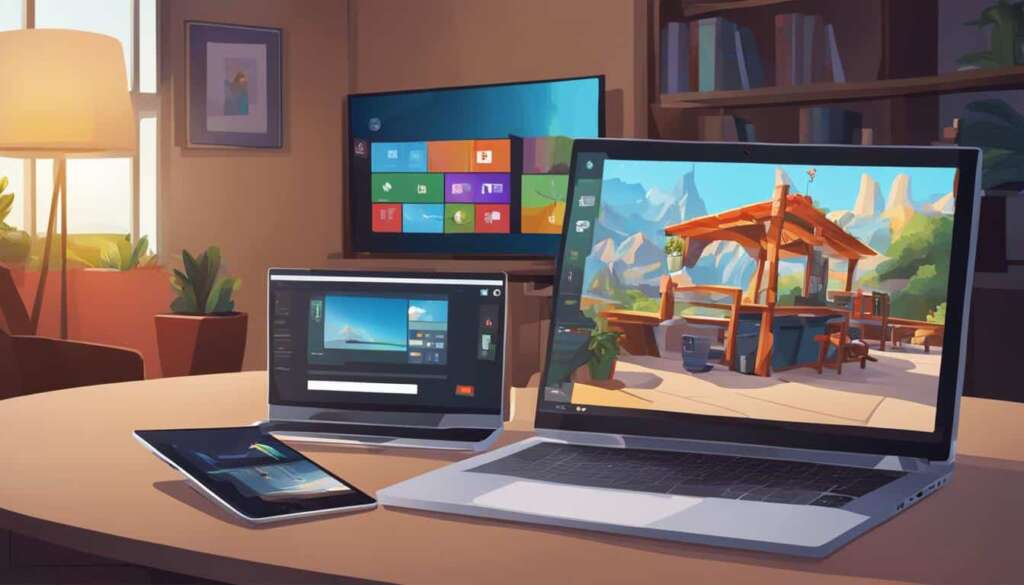Table of Contents
Are you looking for a way to enhance your viewing experience and easily share content from your laptop to your TV? Look no further! In this guide, we will show you how to cast your laptop to your TV, allowing you to enjoy your favorite movies, videos, and presentations on a bigger screen. Whether you want to connect your laptop to your TV with cables or go wireless, we have got you covered.
Connecting your laptop to your TV opens up a world of possibilities. You can watch your favorite shows and movies with friends and family, deliver impactful presentations with larger visuals, or simply enjoy a more immersive gaming experience. Whatever your needs may be, we are here to help you make the connection.
Join us as we explore the various methods for connecting your laptop to your TV and provide valuable tips and troubleshooting advice. You don’t need to be a tech expert to achieve this – just follow our step-by-step instructions and get ready to transform your entertainment and productivity setup.
So, if you’re ready to learn how to cast your laptop to your TV, let’s dive in!
Connecting Your Laptop to Your TV with Cables
If you don’t have a smart TV or prefer a wired connection, you can connect your laptop to your TV using cables. The most common method is using an HDMI cable, which offers high-quality video and audio transmission. Simply plug one end of the HDMI cable into the HDMI port on your laptop and the other end into an available HDMI port on your TV.
If your laptop doesn’t have an HDMI port, you can use a VGA cable for video and an audio cable to transmit sound. Ensure that both devices are turned on, select the correct HDMI or VGA input on your TV, and adjust the display settings on your laptop to duplicate or extend the screen to the TV.
Wirelessly Mirroring Your Laptop Screen to Your TV
If you prefer a wireless connection between your laptop and TV, there are several options available. Wi-Fi Direct, Miracast, and AirPlay are technologies that enable you to cast your laptop screen to your TV without any cables. You can enjoy the convenience of wirelessly streaming your favorite movies, videos, and presentations directly on your TV.
Wi-Fi Direct: Wi-Fi Direct allows you to connect your laptop and TV directly, eliminating the need for any additional devices. With Wi-Fi Direct, you can seamlessly mirror your laptop screen onto your TV with just a few simple steps. Ensure that both your laptop and TV support Wi-Fi Direct and are connected to the same Wi-Fi network. Follow the instructions specific to your devices to establish a wireless connection and enjoy a hassle-free screen mirroring experience.
Miracast: Miracast is a wireless technology that works on peer-to-peer networking, allowing you to mirror your laptop screen to your TV effortlessly. To use Miracast, ensure that both your laptop and TV support Miracast technology. Connect both devices to the same Wi-Fi network and enable screen mirroring on your laptop. Follow the on-screen instructions to establish a secure connection and enjoy the seamless casting experience.
AirPlay: If you have an Apple laptop and an Apple TV, you can take advantage of AirPlay to wirelessly mirror your laptop screen on the TV. With AirPlay, you can easily stream videos, photos, and presentations from your MacBook to your Apple TV. To use AirPlay, make sure both your laptop and Apple TV are connected to the same Wi-Fi network. Access the Control Center on your Mac and select AirPlay. Choose your Apple TV from the available devices and begin mirroring your laptop screen on the TV.
Before you start casting your laptop screen to your TV wirelessly, make sure you check the compatibility of your laptop and TV with the desired wireless mirroring technology. It is essential to verify that both devices support Wi-Fi Direct, Miracast, or AirPlay, depending on the technology you prefer. Additionally, ensure that both devices are connected to the same Wi-Fi network to establish a seamless connection.
| Wireless Mirroring Technology | Supported Devices |
|---|---|
| Wi-Fi Direct | Most modern laptops and smart TVs |
| Miracast | Windows laptops and Android TVs |
| AirPlay | Apple laptops and Apple TVs |
Now that you know the various wireless mirroring options available, you can select the one that suits your requirements and enjoy a seamless laptop-to-TV screen mirroring experience. Enhance your viewing pleasure and share your content on a bigger screen with ease!
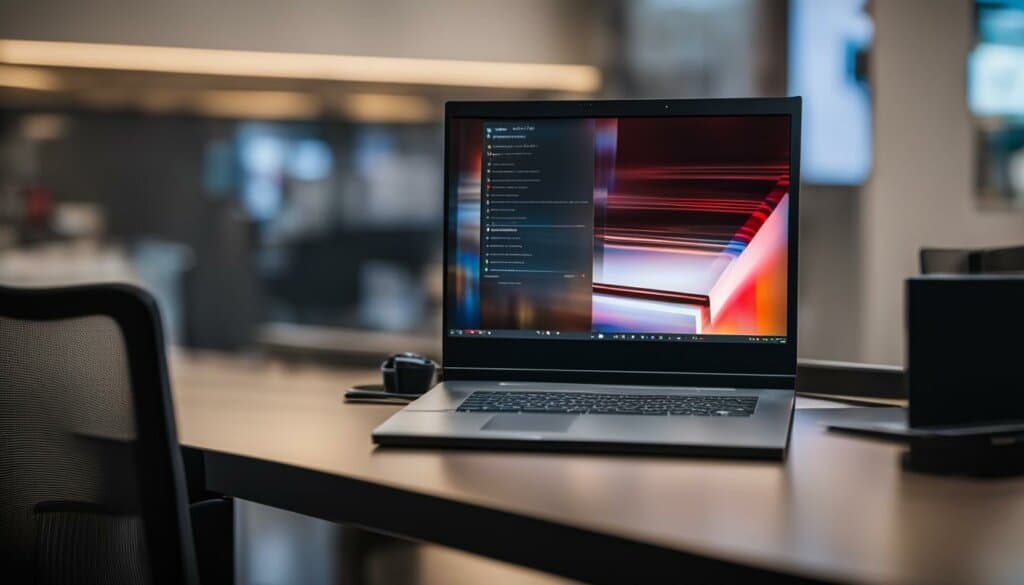
Troubleshooting and Tips
If you encounter any issues when connecting your laptop to your TV, don’t worry. There are several troubleshooting steps you can try to resolve the problem. Follow these tips and get your laptop-to-TV connection up and running smoothly.
Troubleshooting Tips:
- Ensure that both your laptop and TV are connected to the same Wi-Fi network. This is crucial for wireless connections.
- Check if the HDMI or other cables are securely plugged in. Loose connections can lead to display issues.
- Make sure that the correct input source is selected on your TV. Often, TVs have multiple input options, so selecting the right one is important for a successful connection.
- If you’re using an adapter, verify its compatibility with both your laptop and TV. Incompatible adapters may cause connection problems.
- Check your laptop’s display settings. Ensure that the screen is set to mirror or extend to the TV, depending on your preference.
If you’ve tried these troubleshooting tips and are still experiencing problems, don’t worry. There are additional steps you can take:
Refer to the user manuals for both your laptop and TV. These manuals often provide specific troubleshooting steps and solutions tailored to your devices.
If the issue persists, seek technical support from the manufacturer of your laptop or TV. They may be able to provide guidance or further assistance.
Consider optimizing the display settings on both your laptop and TV. Adjusting the brightness, contrast, and resolution can enhance your viewing experience.
With these troubleshooting tips and expert guidelines, you’ll be able to resolve any laptop-to-TV connection issues and enjoy seamless casting for a truly immersive experience.
Conclusion
Casting your laptop to your TV offers numerous benefits, including a larger screen size, a better audio-visual experience, and the ability to share content with others. By connecting your laptop to your TV, you can transform your viewing experience and enjoy your favorite movies, TV shows, and videos on a bigger screen with enhanced sound quality. Whether you choose to connect your laptop to your TV with cables or wirelessly, the process is simple and straightforward, allowing you to effortlessly stream your favorite content.
Not only does casting your laptop to your TV provide a more immersive entertainment experience, but it also enhances productivity. You can easily display presentations, documents, and even web pages on your TV, making it easier to collaborate with others or work on projects with a larger display. This can be especially useful for professionals who frequently conduct presentations or need to share their work on a bigger screen.
To get started, simply follow the instructions specific to your laptop and TV, ensuring that both devices are on the same Wi-Fi network when using wireless casting methods. If you encounter any issues, refer to the troubleshooting tips provided earlier in this article or consult the user manuals for your laptop and TV. Adjust the display settings to suit your preferences and make the most out of your laptop and TV connection. Enjoy the convenience and versatility of casting your laptop to your TV and elevate your entertainment and productivity to new heights.
FAQ
How can I cast my laptop to a TV?
To cast your laptop to a TV, you can use either cables or a wireless connection. Cables such as HDMI or VGA can be used to connect your laptop to the TV. Alternatively, you can use wireless technologies like Wi-Fi Direct, Miracast, or AirPlay, depending on your laptop and TV compatibility.
Which cables can I use to connect my laptop to a TV?
You can use an HDMI cable to connect your laptop to a TV. If your laptop doesn’t have an HDMI port, you can use a VGA cable for video and an audio cable to transmit sound.
How do I wirelessly mirror my laptop screen to a TV?
To wirelessly mirror your laptop screen to a TV, you can use Wi-Fi Direct, Miracast, or AirPlay. These wireless technologies allow you to establish a direct connection between your laptop and TV without the need for additional devices.
What should I do if I encounter issues when connecting my laptop to a TV?
If you encounter issues when connecting your laptop to a TV, there are a few troubleshooting steps you can try. Ensure that both devices are connected to the same Wi-Fi network, check that the cables are securely plugged in, and select the correct input source on your TV. If you’re using an adapter, make sure it is compatible with both your laptop and TV. If problems persist, consult the user manuals or seek technical support from the manufacturer.
What are the benefits of casting my laptop to a TV?
Casting your laptop to a TV offers numerous benefits, including a larger screen size for better viewing, enhanced audio-visual experience, and the ability to share content with others. It can also increase productivity by allowing you to use your TV as a second monitor.

